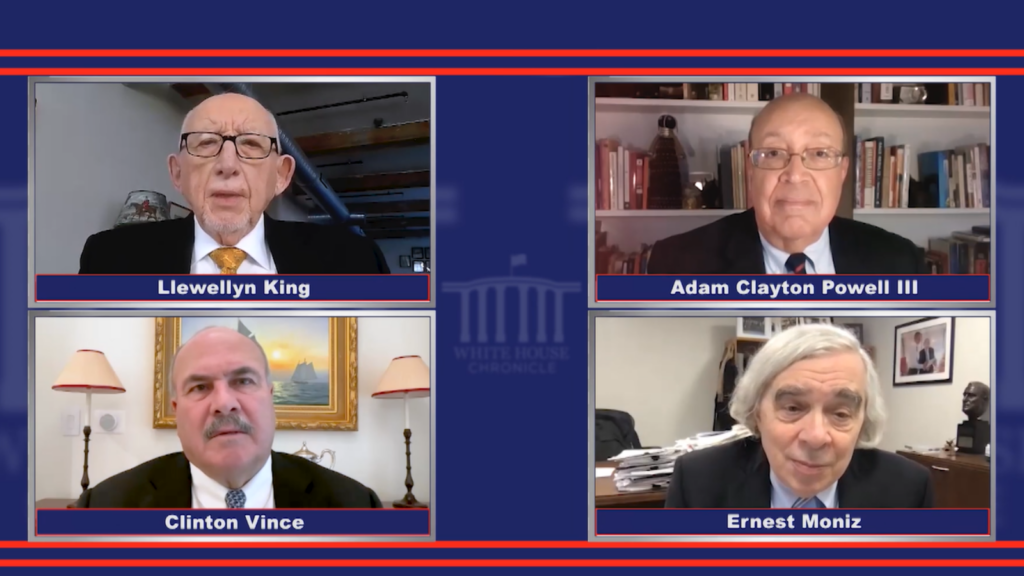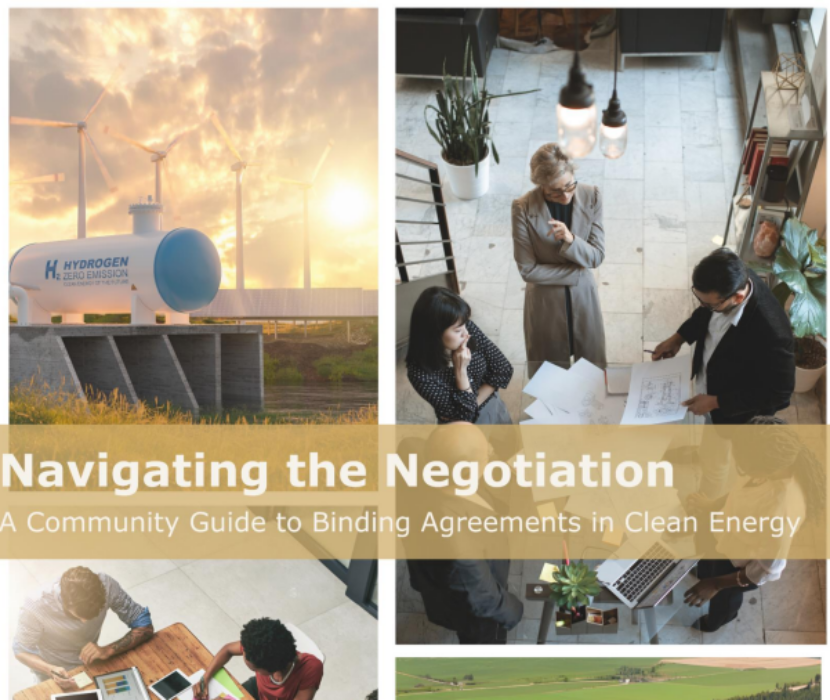
On March 5, “White House Chronicle” Executive Producer Llewellyn King, along with Co-host Adam Clayton Powell III, interviewed EFI Foundation CEO Ernest Moniz. They also interviewed Clinton Vince, Chair of the U.S. Energy Practice at the global law firm, Dentons. “White House Chronicle” is “one of the longest-running, weekly news and public affairs programs on PBS,” combining in-depth discussion of the news with amusing commentary.
Moniz focused on the EFI Foundation’s role in the new Hydrogen Demand Initiative (H2DI) and ways in which the 2024 presidential election might impact the growth of clean hydrogen. H2DI is a consortium that the U.S. Department of Energy (DOE) is funding and that the EFI Foundation is leading with Dentons and several other organizations as partners. It aims to create domestic demand for clean hydrogen. (Learn more at H2DI.org.)
Moniz explained that H2DI will use federal tax incentives and a demand stimulation program to create the robust clean hydrogen demand that could get a market off the ground within the next decade. This work will be in coordination with the seven DOE regional hydrogen hubs.
He said the United States already has a substantial hydrogen market, with 10 million tons of hydrogen used each year to make ammonia and fertilizer. However, this hydrogen is not clean.
“Roughly 10 [to] 11 kilograms of carbon dioxide are released to the atmosphere for every kilogram of hydrogen made today,” Moniz said. “We want to get that ratio way down, close to or even at zero.”
The Bipartisan Infrastructure Law and the Inflation Reduction Act aim to reduce CO2 emissions by creating a clean hydrogen market in the United States. There is not one standard definition for clean hydrogen, but federal legislation says it should emit significantly less CO2 than the 10-11 kilograms that is normal today.
Moniz explained that clean hydrogen would be produced using entirely different processes than are used today, such as by splitting water molecules or the methane molecules found in natural gas. He explained the tradeoffs between these two methods of supplying clean hydrogen, saying that making hydrogen from water is zero carbon but energy intensive, while making hydrogen from methane uses less energy but results in leftover carbon that must be sequestered.
However, Moniz said demand, not supply, is the major challenge to creating a clean hydrogen market. He explained that DOE is trying to address this challenge through its new H2DI program. In January, DOE announced that the EFI Foundation would lead H2DI, partnering with S&P Global, Intercontinental Exchange, the MIT Energy Initiative, and Dentons. While H2DI is still in the early planning stages, Moniz described its basic contours.
“I hope that we will help stimulate the market,” Moniz said. “We will be responsible… [for designing] the market stimulation structures that can move hydrogen up the pathway towards growing to be a major source of low-carbon energy.”
Moniz said that a focus on hydrogen is necessary because the clean energy transition cannot rely on low-carbon electricity alone.
“It’s absolutely essential to have lots of low-carbon electricity, but I think now it is accepted that we are also going to have to have the services that are provided by fuels,” Moniz said. “Hydrogen is certainly one of the most promising approaches. … Very high-temperature heat in industrial processes are almost certainly going to be more economically addressed through something like a fuel.”
Clinton Vince, Chair of the U.S. Energy Practice at Dentons, and H2DI partner, said that H2DI comes at an important moment in the clean energy transition.
“This is one of the most consequential projects in the energy industry right now,” Vince said. He added that H2DI addresses a common issue that when a new technology is ready for market, it does not have enough buyers. H2DI is meant to help incentivize potential consumers to use clean hydrogen technology.
Moniz also discussed how the 2024 presidential election could influence clean hydrogen. He said that the pace and scale of the clean energy transition might change depending on whether President Joe Biden or former President Donald Trump wins the next election, but he expects the overall market trend to continue toward decarbonization.
“[Companies] have a longer wavelength in terms of their planning than four years,” Moniz said. “We are continuously heading toward lower carbon, and we will do so independent of the coming and future elections.”
The EFI Foundation was selected to lead H2DI because of prior experience publishing research and analyses that examine the current status of hydrogen in the United States and its potential trajectory. The EFI Foundation has published more than half a dozen reports on hydrogen, including “The U.S. Hydrogen Demand Action Plan,” which focuses on leveraging regional hydrogen hubs to grow the market.
– Georgia Lyon, Communications Associate
(Share this post with others.)




